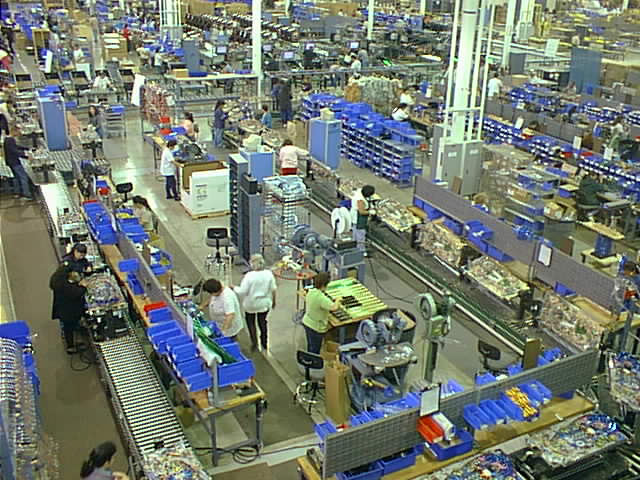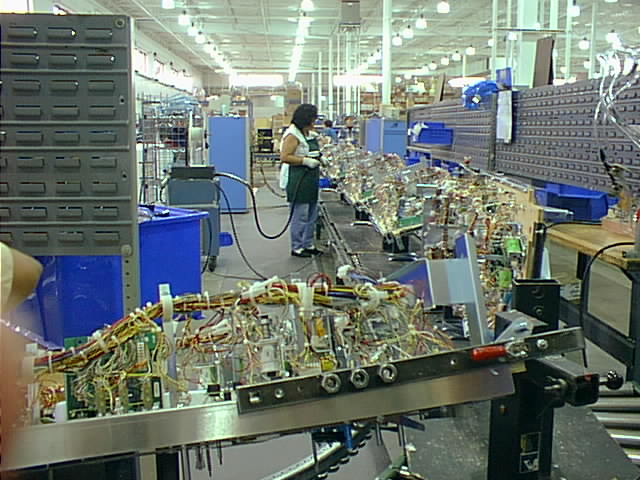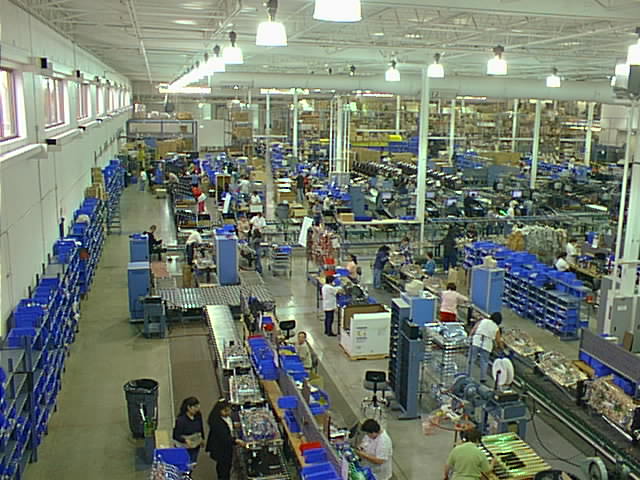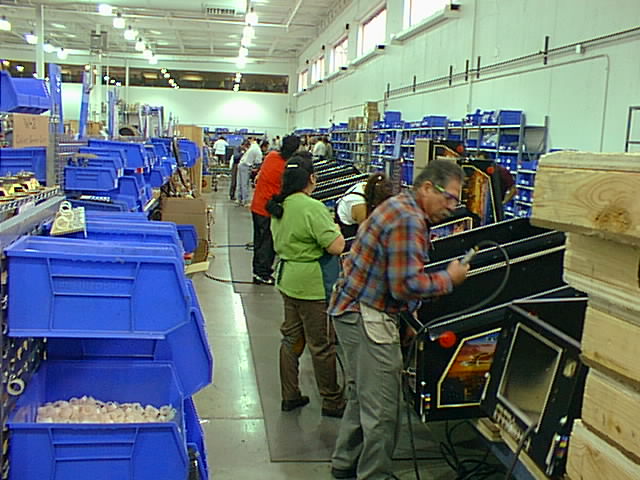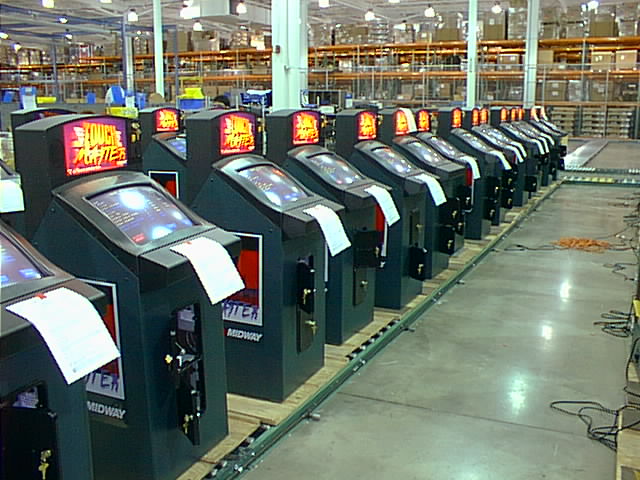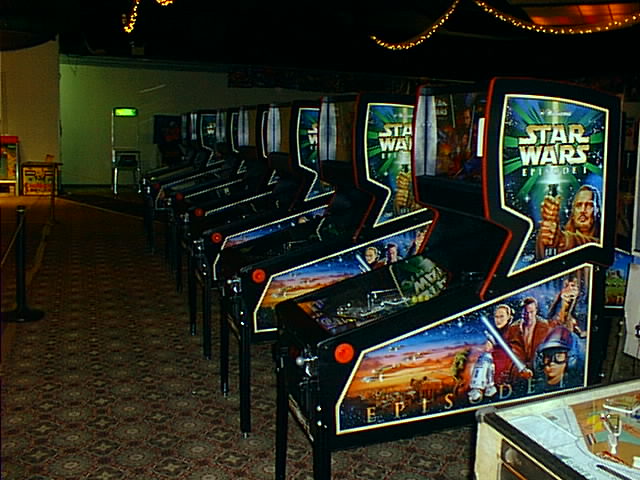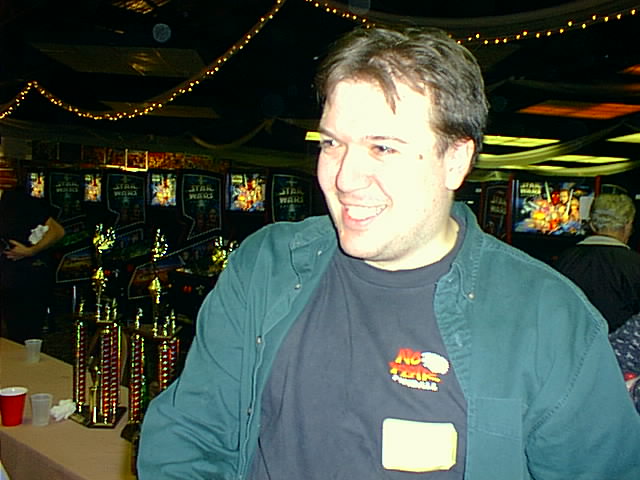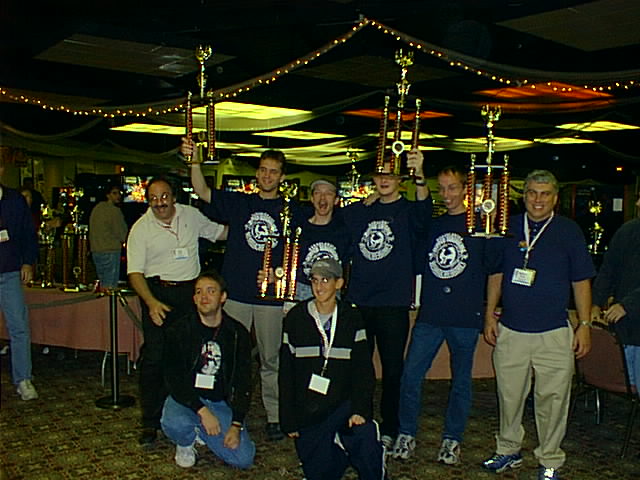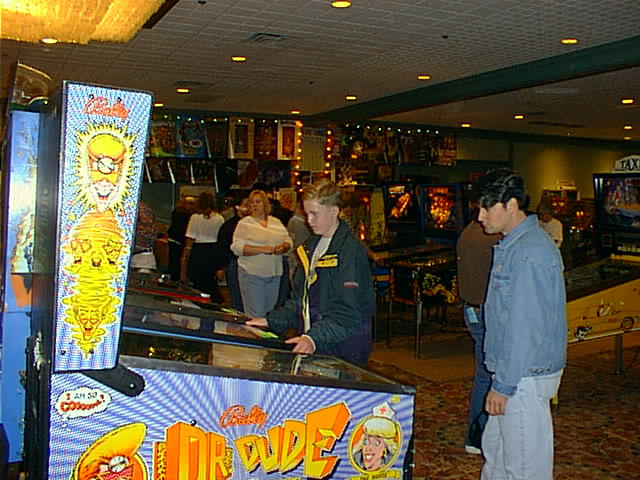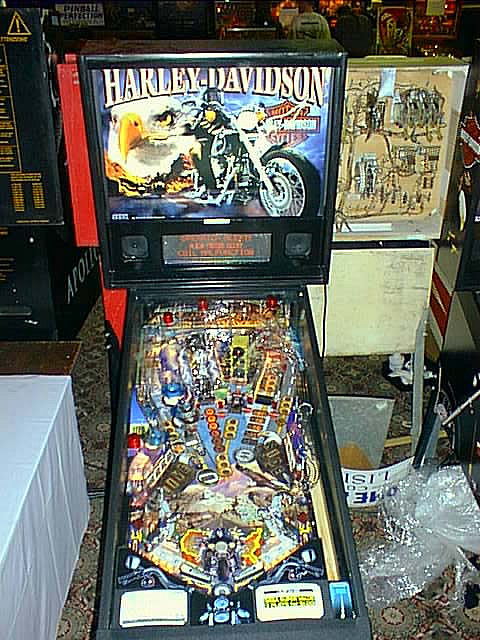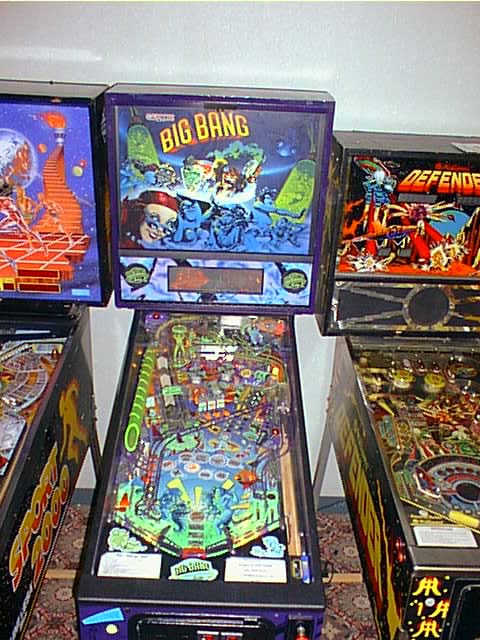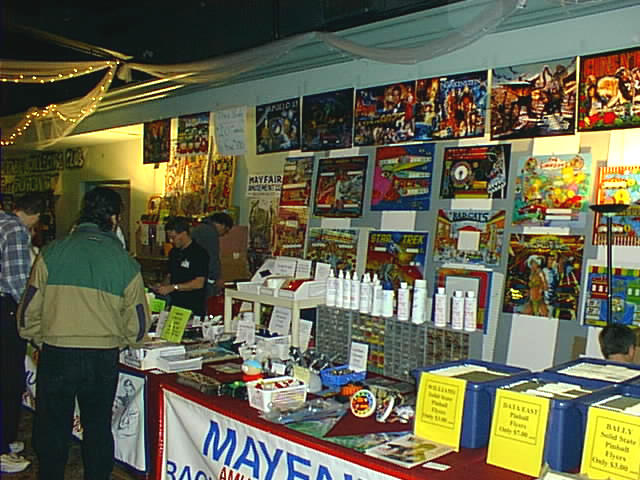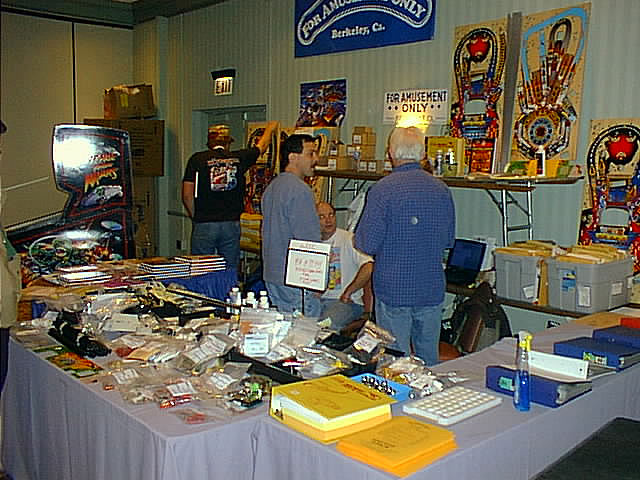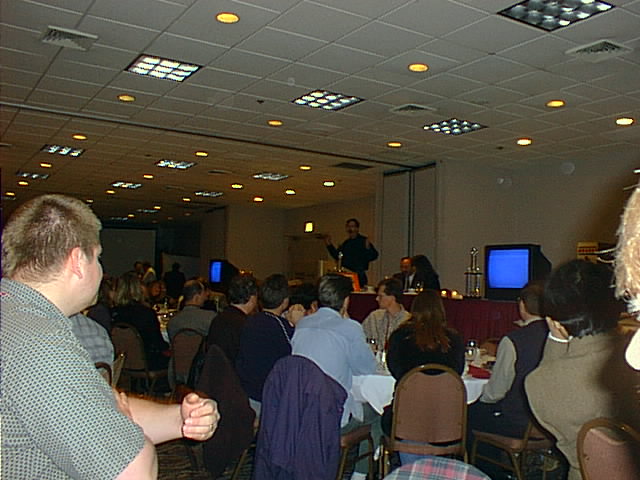
|
PINBALL
EXPO 99:
A STORM BREWING |
|
Bags are unpacked, mail is opened, that dodgy milk is thrown away. Yes I'm just back from Chicago so it's time to fire up the computer and look back on this year's Pinball Expo. I'm pleased to report that this year was another good year for organisers Rob Berk and Mike Pacak. This was their 15th annual celebration of all things pinball, and as usual it was held at the Ramada next to Chicago's O'Hare airport. This year it ran from Thursday 21st to Sunday 24th October. Events started early, though, with a pre-Expo party held by Rick Schieve on Wednesday night. Rick has a superb games annex at his house. There were about 15 pins and 10 video games. All the pins are modern Williams/Ball games although no Pinball 2000 machines have found their way into his collection yet. Rick lives about an hour away from the Ramada by car, and it can truly be described as in the middle of nowhere - in fact I still have no idea where we were, but when the game room's that good, who cares where it is? Thursday morning and the Expo starts properly with the Williams factory tour. We drove there, avoiding the tour busses, which had previously been those rickety yellow school busses you see on TV. This year they'd been upgraded but we drove anyway. WMS (Williams parent company) may be in Chicago, but again it took about an hour to drive there from the Ramada, not helped by us following one of the tour busses which promptly got totally lost. It's hard not to be impressed by the WMS factory. It's huge, clean, light and airy. It's nowhere near running at full capacity - and some parts are under construction - but it doesn't just make pinball games. They also make Midway video games and have a huge area devoted to spares. The picture below shows the pinball production line:
The process runs in a clockwise direction, with bare playfields entering the U-shape line and having more parts added at each workstation, leaving at the top left to be installed into a cabinet. Each workstation is expected to spend the same amount of time on each process, so every so often a buzzer sounds and the line rotates round one place.
Initially the top surface of the playfield is populated, but pretty soon the assembly is flipped over on it's mountings and work on the underside starts.
The bottom of the above picture is the end of the playfield line, while above the cabinets are fitted out with their power supplies, switches, speakers etc. In the middle the two parts come together and move to the right for testing and boxing.
Right on cue comes a picture of the lower cabinets being made. Bear in mind that the Pinball 2000 system ships as 2 separate boxes, one for the bottom cabinet and playfield, and one for the monitor backbox. The 2 are not normally tested together before shipping.
Just beyond this is the playfield preparation area. Here a pre-printed playfield is put on the above press, and perforated to provide accurate screwholes on both sides.
Just across from the pinball line, these touchscreen games were being soak-tested in the video game production area. The area at the top of that picture is the spares storage. It runs the entire length of the factory in about 6 rows jam-packed with familiar bits and pieces. Officially, WMS only keep spares for games going back 5 years before selling the parts to companies specialising in spares such as Mayfair and Pinball Resource. That said, there were some parts from games much older than that. A Bride of Pinbot rotating head, Addams Family bookcase, Twilight Zone parts. If you've ever needed a spare part for your game, it's a real "kid-in-a-sweetshop" experience walking round the spares area. Finally, the good folks at WMS were kind enough to provide us with free Star Wars Episode 1 tee-shirts as a leaving present. This year's tour proved to be very popular. I think we counted 7 coaches full of people taking the tour, plus those who made their own way there, so a big thanks to WMS for taking the time to show us around. After the tour it was off to a party at Duncan Brown's. Duncan wrote much of the software for Star Wars Episode 1. We travelled there in the company of Gene Cunningham - the man with the world's largest pinball collection, around 2000 games! Duncan has a basement packed with great games, from all eras - EMs and solid-state. Obviously he has a SW-E1 (in his hallway) and I felt a bit guilty for stealing the Grand Champion score on it. That's no way to treat your host. :-) Anyway, big thanks to Duncan for his hospitality. So what of the show itself? This year, as the show was sponsored by WMS the tournament game was Star Wars Episode 1. That meant 12 brand new SW-E1s back to back. An awesome sight.
As a change from previous years, players in the competition were given ID cards with bar-codes on. The SW-E1 games were fitted with bar-code readers, and they were all networked together and linked to a central server which worked out the placings and displayed them. Great credit to the WMS software folk who worked on this in their spare time and produced a highly stable and functional system. The only downsides were the delays. It took about 30 minutes to be issued an ID card, and the same again to get to play. As usual, the top 16 scores qualified for the next rounds. You were given 2 games with your Expo registration and could purchase more goes at $5 per 2 tries. I initially thought that this gives an unfair advantage to those with deep pockets. You keep buying more goes until you qualify. But ultimately, if you're not consistently good you'll get knocked out of the competition very soon. There were several competitions running. The Open, Women, Youth, Tots, Manufacturers, 60's, 70's and Team. The main one
is the Open championship which was won by Noel Stere in a closely contested
final on Sunday afternoon. Congratulation to him. He went on to face the winner of the Manufacturers' Division in the Grand Wizard shoot-out. Noel narrowly edged out James Shird to win that title too. The team competition was won by the Dutch team shown here with Rob Berk on the left and Mike Pacak on the right.
The Expo itself had a good selection of games on show, and available for play. It has to be said though, there were slightly fewer games that previously and they were in worse condition. Games seem to be brought along with the main intention being to sell them. Thus games were constantly being carted off and not always replaced. Also, some games were just not working, while many had faults of some kind. A Pinbot game didn't even have a left flipper button
Some exceptions to the above were present. Jonathan Deitch's Funhouse was just there to play and admire the NOS playfield. Sega pinball were bought out just before the show. The new owner is Gary Stern and the company is called Stern Pinball. This late change left something of a gap at the show. Normally Sega had a decent presence, but this year Stern could only manage a small and brief appearance. They brought 2 Harley Davidson games along, one of which broke pretty quickly.
It's a shame because it's really rather a good game. The shots are not too hard, while the sound quotes are excellent. The traffic light is a straight lift from High Speed/Getaway but the biking theme works very well and the game looks attractive too. Elsewhere there was the chance to play Capcom's last game, the fabled Big Bang Bar. This was never released and I believe only 10 samples were made. It's a real shame because it's a great game. Lots to shoot for, great lights and dots effects. But the sound quotes and music really make this game.
If only they'd made this game instead of the likes of Airborne then they could well have had a hit on their hands. Sadly we'll never know. There was no shortage of spares and parts for sale. Mayfair Amusements had their usual huge stand with a wide range of parts, manuals, promotional plastics, cleaners and translites.
Meanwhile over the other side of the show Jim Talbott's For Amusement Only were selling books, playfields, manuals and even TZ Powerballs, though you'd not be buying them for souvenirs at $50 a piece.
They were joined by Steve Young's Pinball Resource with another large stand. If you just had to have a part, the chances were you'd find it here. That's all very well, but who was there? Gary Stern made a brief speech about his plans for Stern Pinball Inc (SPI). While it's still early days for him, he did state that he has intends making "traditional" mechanical pinball games and not going along the route that Pinball 2000 has taken. George Gomez did an excellent presentation about how Pinball 2000 came into being, the other ideas discussed, the personalities involved and how their views clashed. George was much more open than you'd ever expect a company employee to be about who said what, and the detail of the development of the platform. He ended on a very downbeat note, saying he had great fears for the future of WMS's pinball division and didn't expect it to last much longer. John Osborne related his experiences working at Gottleib. Tim Arnold extolled the benefits of playfield restoration and cleaning. His show stopping performance was when he picked up a bottle of Novus playfield cleaner and to demonstrate it's non-toxic properties squirted in into his mouth to swallow it. That was the idea. However, he missed and covered the podium, the microphone and his notes with the liquid. Clay Harrell and Rob Hayes did a very interesting talk on Williams/Bally WPC repairs. You can see their information at www.pinballhq.com Finally, the
big one - The Pat Lawlor Show. This was combined with the banquet
this year. Pat's show is the highlight of the
seminars, but attendees were a bit hacked off by the combining of the
show with the less popular and extra cost banquet.
Pat brought along his WMS colleagues Steve Kordek, John Youssi, George Gomez, Scott Slomiany, Duncan Brown, Roger Sharpe, Ted Estes and more to play a game of Hollywood Squares (known in this country as Celebrity Squares). Loads of prizes were given out. They consisted of various Williams bits and pieces, plastics, ramps, translites, tee-shirts etc. Sadly, none came in this direction but a good time was had by all. Later in the evening, all the non-US visitors were presented with Pinball Art & Design posters, to go with the free Safecracker token everyone got. There were loads more seminars I've not had time to mention covering a whole range of subjects. Update: Since writing the above (3 hours after getting off the plane), George Gomez's comments were proved to be correct, and WMS announced the closure of their pinball business. This is without doubt a disaster for the industry and for us collectors and enthusiasts. Williams and Bally have a fantastic history of superb games. For me, they've made every game I've ever bought for my home collection (see http://www.cix.co.uk/~mayub for details) and every game I've ever lusted over. I've travelled far and wide to catch the newest WMS game, and having seen the effort they put into not only the game design but the support of enthusiasts. Who else put their entire ROM library on the web, along with the Ask Uncle Willy column and various other newsgroup titbits? But the game business moves on, and players' preferences change. Arcade games can't compete with similarly specified home game systems. Pinball 2000 was a brave step, but ultimately wasn't given the time it would take to establish. So who's left? Ask me at the beginning of the year at ATEI - when WMS were unveiling P2K, and Sega had a big hit with South Park - what state the industry would be in come year end, and I'd never have guessed that by the end of 1999 the only manufacturer of pinball machines would be Stern. Gary Stern - the future of pinball lies in your hands. Don't drop it.
© Pinball News 2000 |
